Flightdeck Friday: Early Guided Weapons Edition

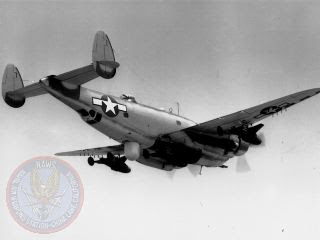
PV-1P Ventura – Note the Peleican’s under the wings and the extended radome for the AN/APS-2 aft of the bomb bay.
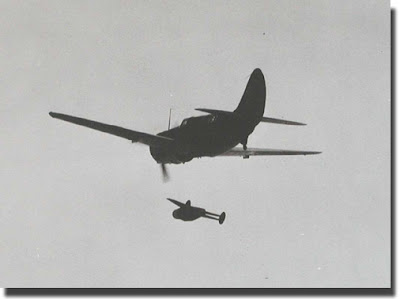 Drop test of a Pelican from an SB2C Helldiver. Below: PB-1 with 2 x Pelicans abreast the bomb bay. Note the extended radome for the AN/APS-2 where the ball turret would normally have been. (ed: We’ll be seeing more of the PB-1 series in a forthcoming issue of Flightdeck Friday in the very near future…)
Drop test of a Pelican from an SB2C Helldiver. Below: PB-1 with 2 x Pelicans abreast the bomb bay. Note the extended radome for the AN/APS-2 where the ball turret would normally have been. (ed: We’ll be seeing more of the PB-1 series in a forthcoming issue of Flightdeck Friday in the very near future…)
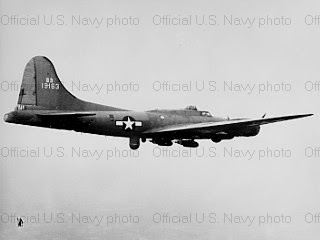
SWOD Mk9/ASM-N-2 Bat
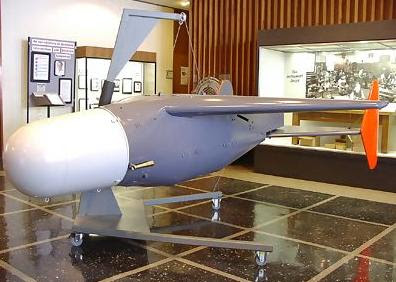
Building on the experience gained from the Pelican, the Navy, via the National Bureau of Standards (NBS) (2) sought to develop a standoff weapon that had a €œfire and forget € feature to it. At the time, that meant an active radar seeker that was integrated with an airframe and warhead. Using a similar airframe as the Pelican and incorporating a 1000 lb bomb, the Bat (so-named because like its erstwhile mammalian cousin, this Bat would also home on signals bounced back from a target that it alone had generated) began operational tests in 1944 and in January 1945 it was declared operational and deployed in combat in the Pacific theater. The Bat was deployed on the much larger PB4Y-2 Privateer (the Navy’s long-range patrol bomber derived from the Consolidated B-24 Liberator) against Japanese shipping for the remainder of the war. Success was mixed at best €“ several Japanese ships, including a destroyer, were sunk off Borneo, but the radar worked all to well at picking up targets €“ and clutter from nearby islands, other ships, etc. It was easily mis-directed and thus subject to countermeasures. Attempts by the Navy after the war to improve the Bat (by this time redesignated the ASM-N-2, or Air-to-Surface Missile, Navy, 2) were unsuccessful and it was retired from the inventory.
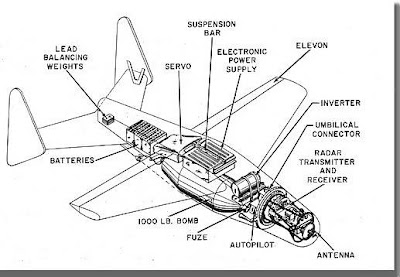 Above: Contemporary cutaway view of the Bat. Below: Guidance section for the Bat’s active radar seeker.
Above: Contemporary cutaway view of the Bat. Below: Guidance section for the Bat’s active radar seeker.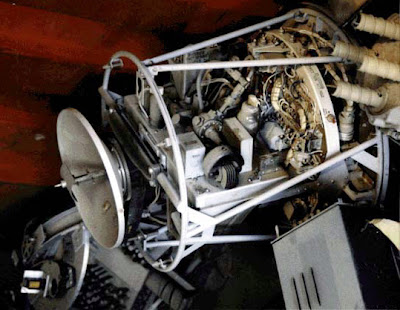
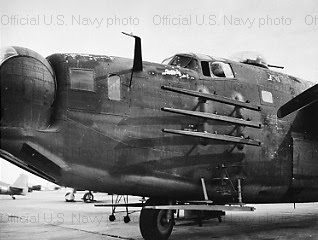 Above: Early radar mod to PB4Y Privateer for Bat OPS. Later models (see below) used a more conventional radome (seen here aft of the nosewheel and retracted )
Above: Early radar mod to PB4Y Privateer for Bat OPS. Later models (see below) used a more conventional radome (seen here aft of the nosewheel and retracted )
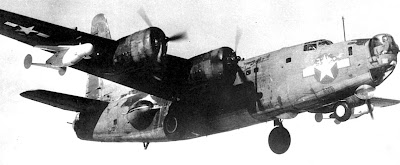
Data for ASM-N-2:
Length: 3.63 m (11 ft 11 in)
Wingspan: 3.05 m (10 ft)
Weight: 850 kg (1880 lb)
Speed: 480 km/h (300 mph)
Ceiling (max. launch): 8000 m (5 miles)
Range: 32 km (20 miles)
Propulsion: none
Warhead: 450 kg (1000 lb) general-purpose bomb
Fairchild AUM-N-4/AQM-41 Petrel
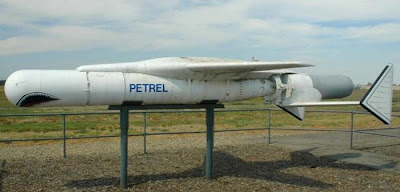
The Petrel traces its lineage back to a family of standoff weapons that began development under the Kingfisher name in 1944. Building on the experience gained from the Pelican and Bat projects (the latter well underway at this point), the Navy’s Bureau of Ordnance sought a jet-powered, standoff torpedo for use against surface and subsurface targets. The design underwent many variations, but the final configuration began testing in 1951. The final configuration consisted of an Mk 21 torpedo as the core with an attached Fairchild J44 turbojet, aerodynamic nose cap and wings and tail made out of wood. The carrying aircraft was the P2V-6B variant of Lockheed’s venerable P2V Neptune. After launch it descended to an altitude of about 200 ft for the fly-in at Mach 0.5. Guidance was via semi-active radar homing until the Petrel was within about 2 nm of the target. At that point, the engine was stopped and the wing and tail shed, dropping the torpedo into the water at which point it began self-guiding. That was the theory €“ practice proved altogether more problematic, especially where a submerged sub was the target. With a prolonged development and spotty operational record, by 1959 the Petrel was withdrawn from active service and placed with the Reserves. After a brief stint where it was used as a drogue, the Petrel was finally withdrawn from the inventory altogether in the early 60’s.
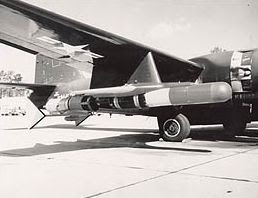
Above and beow: Petrel as carried by P2V-6B Neptune.
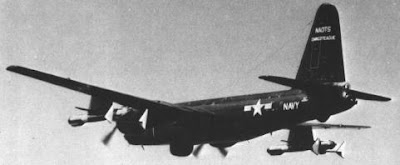
Data for AUM-N-2 (AQM-41A):
Length: 7.31 m (24 ft)
Wingspan: 4.06 m (13 ft 2 in)
Diameter: 61 cm (24 in)
Weight: 1700 kg (3800 lb)
Speed: 600 km/h (325 kts)
Range: 32 km (20 miles)
Propulsion: Fairchild J44 turbojet; 4.4 kN (1000 lb)
Warhead: AUM-N-2: MK 21 homing torpedo; 900 kg (2000 lb)
These were but a few of what was a very robust precision weapons development program within both the Navy and Army Air Forces during WW2. So what happened you may ask? The technology was still immature, especially where target discrimination and clutter/ counter-measure rejection were concerned, and the development of nuclear weapons, especially the €œsmaller € nukes sized for delivery by ship- and shore-based tactical aircraft effectively sidelined concerted efforts on development of conventional PGMs. Efforts in this area, with the exception of air-to-air and surface-to-air guided weapons, would be placed on the back burner until the Vietnam War. But that’s another story for another time…
References:
Bat head: http://biomicro.sdstate.edu/pederses/asmbat.html
Directory of U.S. Military Rockets and Missiles – Appendix 1: Early Missiles and Drones: http://www.designation-systems.net/dusrm/app1/asm-n-2.html
(2) The National Bureau of Standards was established by Congress in 1901. Its name was changed to the National Institute of Standards and Technology in 1988 as part of the Omnibus Trade and Competitiveness Act. At the same time, Congress expanded NIST’s mission by establishing the Advanced Technology Program and the Manufacturing Extension Partnership. Chartered by the U.S. Congress on March 3, 1901, it was the first physical science research laboratory of the federal government, established at about the same time as the nation’s first commercial laboratory. As part of this mission, NIST scientists and engineers continually refine the science of measurement, making possible the ultra precise engineering and manufacturing required for today’s most advanced technologies. They also are directly involved in standards development and testing done by the private sector and government agencies. NBS had a direct role in the development of the proximity fuze; work on nuclear fission, synthetic rubber and of course, the Bat.

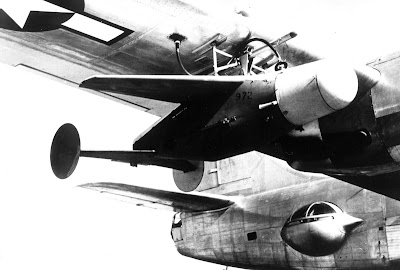
2 Comments
Comments are closed.